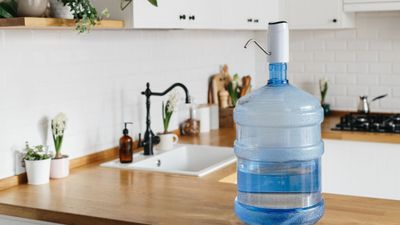Introduction: Why Should One Know Liters And Gallons:
Many Daily Tasks Depend On An Awareness Of The Relationship Between Liters And Gallons; Thus Finishing A Meal Or Filling Up Your Car With Gas Depends On This. Being Able To Convert Between Several Units Helps You To Save Time And Enable You To Make The Right Decisions Whether You Are On Business Internationally Or Traveling. This Page Investigates The Underlying Data, Liter-To– Gallon Conversion, And Pragmatic Uses Of This Data.
One Gallon’s Worth Of What?
1.1 Summary And Context:
• The Imperial Gallon’s Exact Capacity—First Used In The United Kingdom And Its Former Colonies—Is 4.54609 Liters. It Was Computed Historically By Weighing Ten Pounds Of Water At A Particular Temperature.
• A US Gallon Equal 231 Cubic Inches, Or 3.78541 Liters Roughly. Sometimes Measurements Of Fuels And Beverages Are Expressed In US Gallons.
1.2 Gallon Type:
• US Liquid Gallon: Especially For Fuel And Other Liquid Measurements, This Is The Most Often Used Gallon In The US.
• Usually: Used To Measure Dry Goods Like Grains, US Dry Gallon Is A Less Common Unit Of Measurement With Capacity Of Roughly 4.404 Liters.
• Mostly Used In The UK: Canada, And A Few Caribbean Nations, This Unit Of Measurement Is Imperial Gallon And Measures Liquids, Including Gasoline.
2. Knowing The Text:
2.1 Synopsis And Contextual Background:
• The Origin Of The Liter: France Adopted The Lit As A 1795 Volume Metric. The First Definition Consisted In The Kilogramme Of Water At Maximum Density.
• Either One Cubic Decimeter (Dm3) Or One Thousand Cubic Centimeter (Cm3) Is The Modern Definition. Measuring Liquids In Several Spheres Including Daily Life, Research, And Medicine With This Metric Unit Helps One To Understand.
2.2: Globally Applied Liter:
• Universal Applicability: Mostly Liquid Measures, Such As Those For Fuel, Drinks, And Scientific Settings Liters Worldwide Measure Most Since Most Countries Have Adopted The Metric System, The Accepted Unit Of Volume Is Now The Liter.
3. From Gallon Conversion: Liter From Gallon Conversion:
3.1 Formula For Conversion:
• Convert US Gallons To Liters Using Multiples The Number By 3.78541. Five US Gallons, For Instance, Equal Eighteen.927,05 Liters.
• Convert 4.54609 Imperial Gallons To Liters. Five Imperial Gallons, For Example, Equivalent 22.73045 Liters.
3.2 Usual Conversions:
• Conversion US Liquid Gallons To Liters: One US Gallon Equivalent To 3.78541 Liters.
• When Converting Imperial Gallons To Liters, One Imperial Gallon Equivalent To 4.54609 Liters.
• Convert Liters Back To US Gallons Using This Factor: US Gallons In One Liter Equal 0.26417.
One Liter Contains 0.21997 Imperial Gallons:
3.3 Actual Conversion Illustration:
• The Stated US Fuel Tank Capacity: Of 15 Gallons By 3.78541 Yields An Approximative Fuel Tank Capacity Of 56.78115 Liters.
• Two Gallons Of Water Called For Here: Cooking Conversion This Equals 7.57082 Liters From 2 X 3.78541.
4. Liters And Gallons In Practical Terms:
4.1: Auto Fuel:
• Commonly: Used Fuel Economy Unit In The United States Is Miles Per Gallon, Or MPG. Understanding A Common Measurement Used Outside Of The United States, Fuel Consumption In Liters Per 100 Kilometers (L/100 Km), Knowing How To Convert Gallons To Liters Will Help You
• Knowing The Number: Of Liters In A Gallon Will Help You Budget For Possible Gas Prices And Usage Traveling Overseas, Especially To Countries That Use The Metric System.
4.2 Recipe And Cooking:
• Using International Recipes: Many Call For Either Milliliters Or Liters In Place Of Gallons. The Capacity To Convert These Measurements Guarantees Fried And Baking Results.
• Large-Scale Cooking: Changing Gallons To Liters Makes Measurement Of Huge Amounts Of Liquids Easily Whether Throwing Big Parties Or Offering Catering.
4.3 Garden And Residential:
• Measuring Water For Plants: Gardeners Often Need To Measure Water For Plants In Liters Either Using Containers Or Gardening Advice From Nations That Uses The Metric System.
• Often Calculating: Brewing Capacity Or Following Recipes Calls For Home Brewers To Convert Gallons To Liters.
5. Advantages Of Knowledge About Measurements:
5.1 Steer Clear Of Errors:
• Project Accuracy: Guaranturing Accuracy Of Conversion Between Gallons And Liters Accurately In Do-It-Yourself Projects, Scientific Research, And Industrial Procedures,
• Combining Solutions: Cooking, Or Filling Up Your Car With Gas Using Consistent Measures Guarantees Predictable And Dependable Results.
5.2 Trade And Travel Outside:
• Knowing: How To Convert Gallons To Liters Will Help You Better Grasp Fuel Costs And Tank Capacity When Driving In A Foreign Country.
• International Trade: Businesses Dealing Liquids Like Oil, Chemicals, Or Beverages May Need To Convert Between Gallons And Liters.
6. Conversion Instruments:
6.1 Resources For Online Conversion:
• Many Websites: Offer Easy And Quick Tools For Converting Gallons To Litters. These Are Ideal For Exact And Quick Conversations.
• Mobile Apps: There Are Many Cellphones Available With Quick Conversions Between Gallons, Liters, And Other Units.
6.2 Handy Conversion Techniques:
• Applying Digital Conversion Charts Or Printable Ones: Quick Lookups Can Be Finished Quickly Without Internet Connection.
• Time And Effort Can Be Saved By Professionals And Frequent Travelers Memorizing The Most Often Occurring Conversions By Memory, Such As 1 Gallon = 3.785 Liters.
At Last, Knowing Liters And Gallons For Ongoing Use Helps:
Knowing How To Convert Liters To Gallons Will Benefit You Away From The Classroom Cooking, Travel, Filling Your Petrol Tank, And So On Depend On Accurate Conversion Of These Units. Knowing The Conversion Factors, Applying Conversion Tools, And Then Using Them In Practical Contexts Will Help You To Be Always Ready For Any Work.

